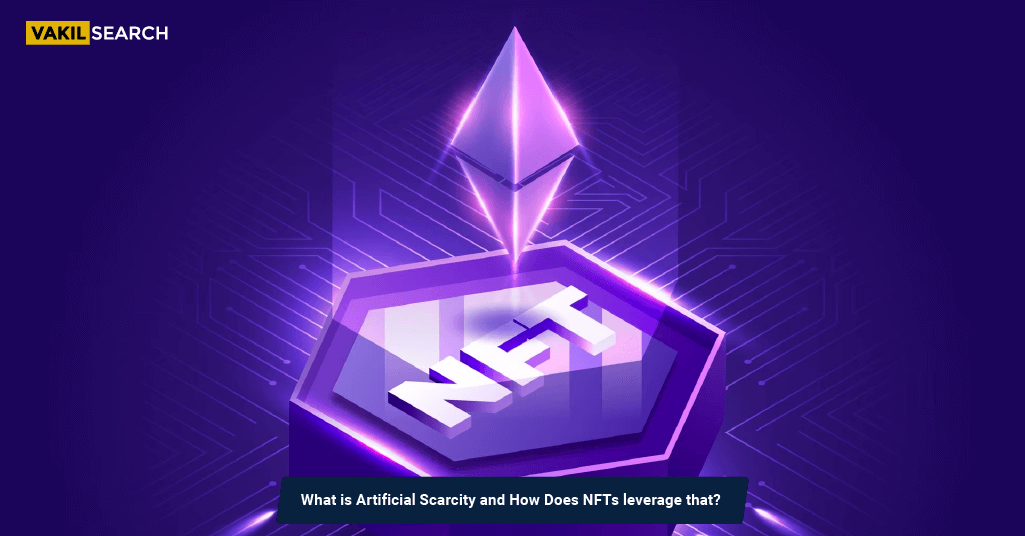Wondering how NFTs drive demand in the digital world in the contemporary age? The key seems to be the power of artificial scarcity. This guide will help clarify your dilemma by clarifying the crux of the matter.
Introduction:
In the realm of blockchain technology, a fascinating concept has emerged: artificial scarcity. This phenomenon challenges traditional notions of supply and demand, and its impact has been particularly evident in the rise of Non-Fungible Tokens (NFTs). In this article, we will explore the concept of artificial scarcity in the digital age, delve into the world of NFTs, and examine how they leverage artificial scarcity to drive demand. Furthermore, we will discuss the mechanisms behind this unique approach and explore the implications of NFTs on the concept of scarcity.
Defining Artificial Scarcity in the Digital Age:
Artificial scarcity refers to the deliberate restriction of supply to increase the perceived value of a product or service. While scarcity has always been a fundamental driver of economics, the digital age has given rise to new opportunities and challenges. In the digital realm, replicating and distributing information is relatively easy and cost-effective, leading to an abundance of digital goods. However, by introducing artificial scarcity, creators can imbue their digital assets with uniqueness and exclusivity.
An Introduction to Non-Fungible Tokens (NFTs):
Non-Fungible Tokens (NFTs) are digital assets that represent ownership or proof of authenticity of a unique item or piece of content. Unlike cryptocurrencies such as Bitcoin or Ethereum, which are interchangeable and mutually replaceable, each NFT is distinct and cannot be exchanged on a one-to-one basis. This uniqueness is achieved through blockchain technology, which ensures transparency, security, and immutability.
Understanding the Link Between NFTs and Artificial Scarcity:
NFTs leverage artificial scarcity by design. They enable creators to tokenize and sell digital assets, such as artwork, music, videos, virtual real estate, and even tweets, as unique and indivisible units. By limiting the supply of these assets, NFTs create a sense of scarcity, thereby increasing their perceived value. Collectors and enthusiasts are motivated to acquire NFTs due to their exclusivity, rarity, and ability to prove ownership through blockchain records.
Leveraging Artificial Scarcity: How NFTs Drive Demand:
The scarcity-driven nature of NFTs fuels demand in several ways –
- Firstly, the limited supply of unique digital assets generates a sense of urgency and FOMO (fear of missing out) among collectors. The fear that a desirable NFT might become unavailable or too expensive in the future prompts individuals to acquire them as soon as possible.
- Secondly, the ability to prove ownership and authenticity through blockchain technology enhances the perceived value of NFTs. The immutability and traceability offered by the blockchain assure buyers that they are purchasing a genuine and unique item, which contributes to the demand.
- Thirdly, the rise of social media and online communities has played a significant role in driving NFT demand. Owning a rare or sought-after NFT has become a status symbol and a way for individuals to showcase their taste and knowledge in the digital world. This social recognition further increases the demand for NFTs.
Exploring the Mechanisms of Artificial Scarcity in NFTs:
NFTs employ various mechanisms to create artificial scarcity. These include limited editions, timed releases, and exclusive collaborations. By limiting the number of editions available, creators can control supply and stimulate demand. Additionally, time-limited sales create a sense of urgency, while collaborations with renowned artists or influencers leverage their existing fan bases, increasing demand for NFTs associated with their names.
Examining the Impact of NFTs on the Concept of Scarcity:
NFTs have had a profound impact on the concept of scarcity. In the digital age, where replication and distribution are virtually costless, NFTs reintroduce scarcity into the equation. This challenges traditional economic models and disrupts established notions of supply and demand. The fusion of blockchain technology and artificial scarcity has opened up new opportunities for creators, collectors, and investors, reshaping the way we perceive and value digital assets.
Conclusion:
Artificial scarcity, coupled with blockchain technology, has revolutionized the digital landscape through the emergence of NFTs. By leveraging scarcity as a driving force, NFTs have unlocked new economic possibilities and created a thriving marketplace for unique digital assets. As the world continues to embrace the potential of blockchain and NFTs, understanding and strategically exploiting artificial scarcity can be a powerful tool for creators, collectors, and investors in the digital age.


